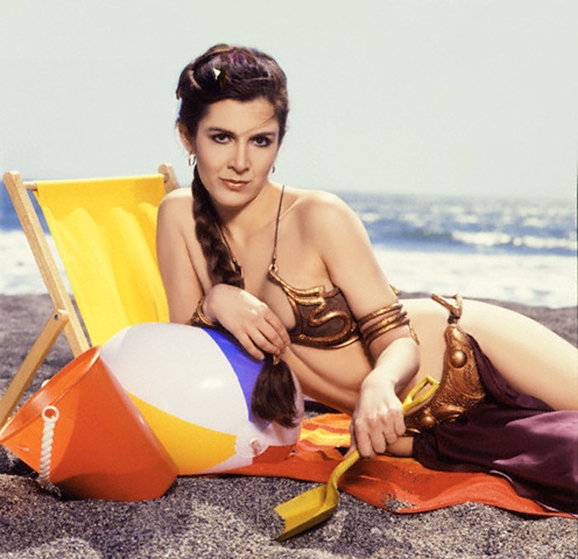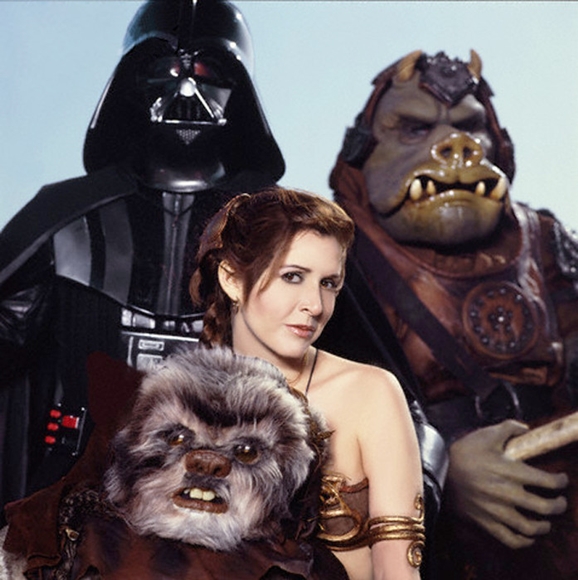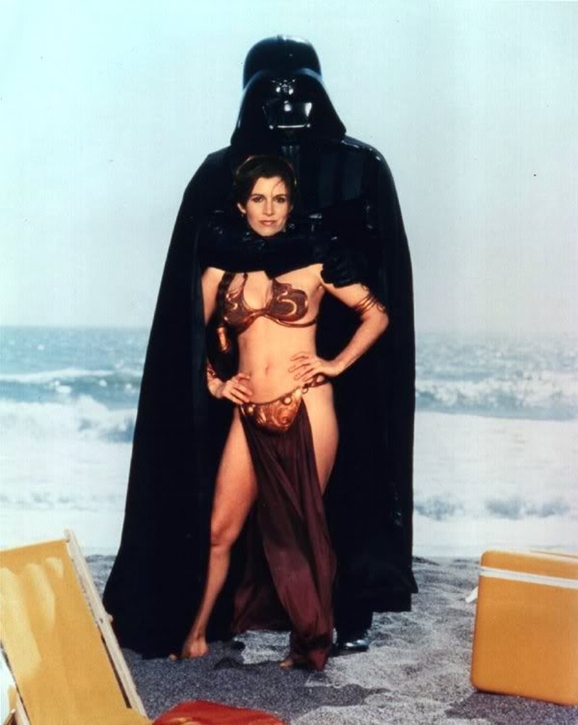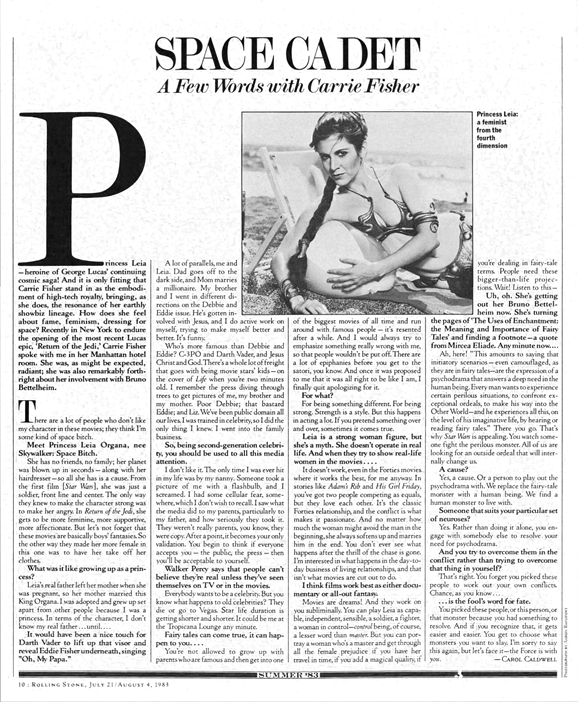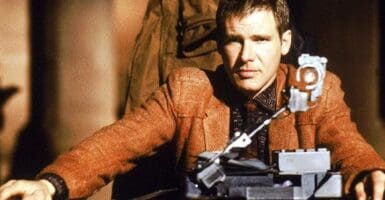Carrie Fisher Talks Feminism And Gold Bikinis In Vintage Return Of The Jedi Rolling Stone Interview
This article is more than 2 years old
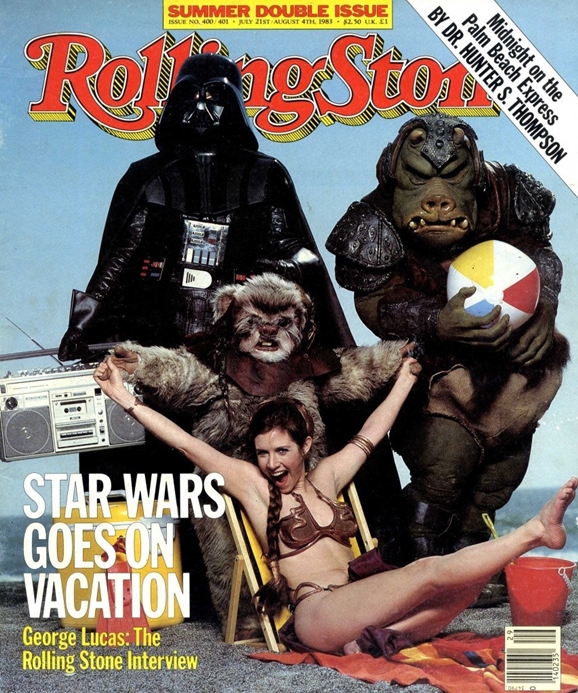 If you were a lad who came of age in the ‘80s, chances are that Leia’s gold bikini from The Return of the Jedi may have almost single-handedly kickstarted your foray into puberty. It’s an interesting dichotomy: Leia was, for the most part, a strong, well-written female role…but they still found a convenient excuse to get her wearing as little as possible for that iconic sequence. If you’ve ever wondered about how the actress behind it all felt about that duality, you’ll find much to intrigue in a vintage Rolling Stone interview with actress Carrie Fisher that has popped up online.
If you were a lad who came of age in the ‘80s, chances are that Leia’s gold bikini from The Return of the Jedi may have almost single-handedly kickstarted your foray into puberty. It’s an interesting dichotomy: Leia was, for the most part, a strong, well-written female role…but they still found a convenient excuse to get her wearing as little as possible for that iconic sequence. If you’ve ever wondered about how the actress behind it all felt about that duality, you’ll find much to intrigue in a vintage Rolling Stone interview with actress Carrie Fisher that has popped up online.
Published in the July/August 1983 issue of Rolling Stone, the feature makes it obvious pretty quickly that Fisher understood the contradictory nature of Leia’s strong personality and played-up sexuality in the third film, but she does point out that Return of the Jedi also gave her a chance to broaden the character away from just being, in her words, “some kind of space bitch.” She continues:
She has no friends, no family; her planet was blown up in seconds — along with her hairdresser — so all she has is a cause. From the first film, she was just a soldier, front line and center. The only way they knew to make the character strong was to make her angry. In Return of the Jedi, she gets to be more feminine, more supportive, more affectionate. But let’s not forget that these movies are basically boys’ fantasies. So the other way they made her more female in this one was to have her take off her clothes.
It’s the same old story, and one that is still playing out even in our supposedly more enlightened age. Male actors like Harrison Ford can still be considered viable sex symbols well into their golden years, and paired off with love interests half their age (both on and offscreen). Their female counterparts can sport just as much talent and charisma, but their looks and sexuality is often assigned more importance, meaning if they aren’t an incredible actress, there’s a good chance their career won’t survive aging a few years. Even the best-written female roles out there, if they’re written for somebody in their 20s or 30s, whoever gets cast will almost certainly be ridiculously attractive. So it goes.
Movies, of course, are by nature exaggerated visions of real life, and that sort of thing doesn’t tend to traffic in subtlety. So how do you pull off a convincing, honest portrayal of a strong, complex female character in a system where the actress playing that strong, complex female will still be asked to pose in her bikini on the cover of Rolling Stone? Fisher’s comments at the time were articulate and pleasantly blunt. (Being raised in a show business family — daughter of singer Eddie Fisher and actress Debbie Reynolds — no doubt helped foster that no-b.s. attitude.) Fisher said:
It doesn’t work, even in the Forties movies where it works best, for me anyway. In stories like Adam’s Rib and His Girl Friday, you’ve got two people competing as equals, but they love each other. It’s the classic Forties relationship, and the conflict is what makes it passionate. And no matter how much the woman might avoid the man in the beginning, she always softens up and marries him in the end. You don’t ever see what happens after the thrill of the chase is gone. I’m interested in what happens in the day-to-day business of living relationships, and that isn’t what movies are cut out to do.
Movies are dreams! And they can work on you subliminally. You can play Leia as capable, independent, sensible, a soldier, a fighter, a woman in control — control being, of course, a lesser word than master. But you can portray a woman who’s a master and get through all the female prejudice, if you have her travel in time, if you add a magical quality, if you’re dealing in fairy-tale terms. People need these bigger-than-life projections.
Sci-fi is certainly still guilty of that whole gender double-standard, whether it’s Leia in the bikini, Seven of Nine in the skintight catsuit, or Carol Marcus’ gratuitous stripdown in Star Trek Into Darkness. But one reason science fiction has attracted so many female fans as the decades passed is because it has served up an atypical number of strong female characters, a trend which both appealed to young women and which fed itself in turn as some of those women grew up and found creative success in the books, shows, and television that shaped the next generation.
Leia. Alien’s Ellen Ripley. Terminator’s Sarah Connor. Farscape’s Aeryn Sun. Babylon 5’s Delenn, Ivanova, and Lyta. Firefly’s diverse but brilliantly realized female cast. Even though it’s far from perfect, science fiction has no shortage of role models I’d be thrilled to have my hypothetical young daughter looking up to. And if that hypothetical female daughter was a teenager right now, I know I’d be relieved that the godawful — narratively and instructively — Twilight movies are done and I could steer her instead toward The Hunger Games’ Katniss Everdeen (and by extension the all-around awesomeness that is actress Jennifer Lawrence).
You can see the full 1983 Rolling Stone interview with Fisher below (click for a larger version). It’s an interesting snapshot of an actor in the midst of the role that would define her forever, and a hint that she had a keen insight and knack for observation that would out itself in Fisher’s later writing projects such as Postcards from the Edge and Wishful Drinking.

